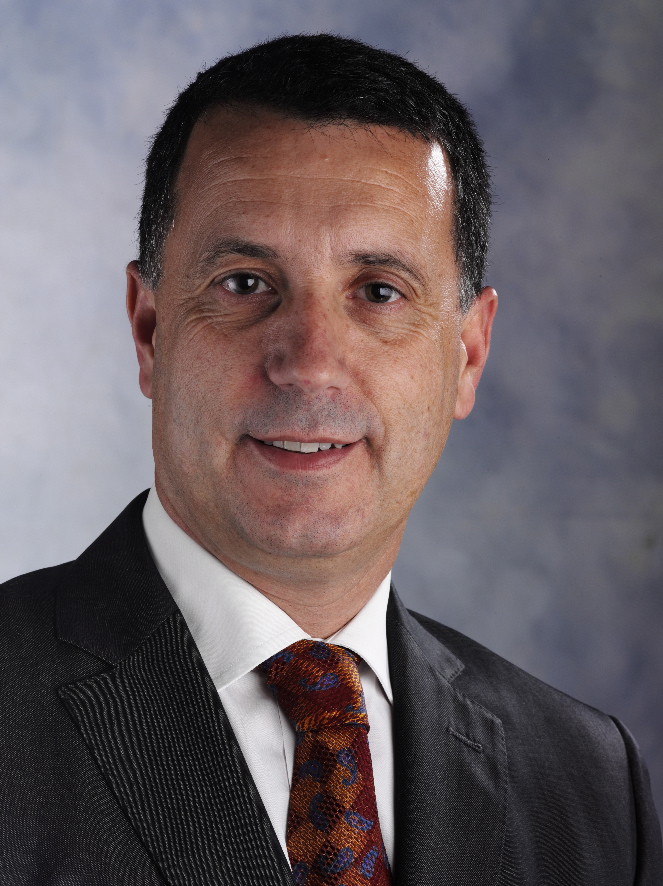
"In partnership with medical professionals, AI is a powerful tool to improve the quality of care and the sustainability of public health services"
Coinciding with his admission to the prestigious Royal Academy of Medicine of Galicia, Alejandro Pazos, the CITIC researcher at UDC specializing in artificial intelligence and medicine, highlights the benefits of this powerful tool at the service of medical professionals. He believes that the new AI models represent a true revolution in the entire care process. Prediction or prevention of certain types of cancer, agility in decision-making, or early discovery and repositioning of drugs are some of the projects they are working on in their RNASA-IMEDIR group at UDC. In this context, he highlights the role of CITIC as the ideal platform to facilitate synergies, develop projects, and attract funds to advance this line of research.
- You have just been appointed Corresponding Academician of the Royal Academy of Medicine of Galicia. What does this recognition mean to you?
It represents, as it could not be otherwise, recognition of the work of more than 30 years of all the members of the research group that I founded and have directed since 1992, dedicated to R&D&I and the transfer of knowledge to the healthcare sector of Artificial Intelligence (hereinafter AI) applications for health care. And it represents enormous gratitude on behalf of all the members of the group to RAMYCGA for this recognition.
- In your admission speech, you spoke about the application of AI in the care process. What do you consider to be the key points in this process?
At this moment we are witnessing a true revolution in the entire care process largely caused by the emergence of new AI models. These have become a very powerful tool to assist the clinician in many areas such as report writing, medical image interpretation, etc.
- You talk about the “7Ps” in current medicine. Could you explain how artificial intelligence integrates into each of these dimensions (Predictive, Preventive, Personalized, Precise, Participatory, Peripheral or displaced, and Polyprofessional)?
At the speed things are going, I would almost better speak of the “8Ps,” incorporating a new P referring to the fact that health care must be Permanent, from conception to “exit.” And I am sure we will continue to expand this list of Ps. In each and every one of them, artificial intelligence is called to play a leading role in facilitating the achievement of their objectives. In our group, we have already developed some AI application for each of them.
- Could you mention any specific example or project your group is working on related to the application of AI in medicine?
We are working on predicting the evolution of pathological processes such as colorectal cancer; in the Prevention of breast cancer by improving screening mammography images; in the development of participatory decision-making support systems for hospital managers and patients in crisis situations; in the development of reduced-presence assistance systems for patient control in intensive care units or other Peripheral units; in the early discovery and repositioning of drugs in Polyprofessional collaboration, etc.
- As an evaluator of PERTE digital transition projects, what proposals have you observed in projects related to care processes?
The vast majority of the projects presented, and all those that received the highest rating and, therefore, funding, were projects that proposed the application of Artificial Intelligence techniques and procedures to improve care outcomes. Forgive me for not being more explicit in this response as an evaluator.
- You mention the importance of moving from theory to daily practice in the field of artificial intelligence and medicine. What do you think are the biggest challenges to achieving this transition and how does your work address these challenges?
The biggest challenges are related to the literacy of the general population and the adequate training of health professionals; with the acceptance of these techniques by professionals, making them see that AI is a powerful tool at their service, which does not aim to replace them; with the ethical and universal use of this powerful tool; with the development of regulations that protect people from human rights violations, etc.
- You talk, for example, about the application of AI in dialysis patients, could you explain how artificial intelligence can specifically improve the treatment and quality of life of these patients?
Well, for example, by predicting and analyzing electrolytes, proteins, and other biomarkers that allow anticipating possible alterations in the state of renal function and proposing therapeutic actions to the clinician to prevent or mitigate the effects of these alterations, even before they occur.
- How do you see the future of medicine with the continuous integration of artificial intelligence?
Are there specific areas where you think AI will have a revolutionary impact in the coming years? It is foreseeable that AI, as a transversal tool, can help clinicians of all specialties improve. In all of them, it can have a revolutionary or very significant effect. The areas where AI is most used and where the most research is currently being conducted are Radiology, Oncology, Hematology, Preventive Medicine, Surgery, Internal Medicine, Pediatrics, Nephrology, or Cardiology.
- What do you think about the transformative role of artificial intelligence in medicine and how do you expect this to benefit health professionals and, ultimately, patients through the work of centers like CITIC at UDC?
Centers like CITIC have, and will have, a special relevance in this revolutionary process as they promote the relationship between medical professionals and AI experts, offering a comfortable working environment between both, freeing us from necessary but collateral tasks such as identifying project funding calls, preparing project applications, publicizing our results, managing public funds…
Artificial Intelligence, as I have already said, is a very powerful tool that is put in the hands of medical professionals to improve the quality of care and the sustainability of public health services. Therefore, as a tool, it does not aim to replace professionals, but it is likely that professionals who handle this tool will replace professionals who do not achieve a minimum proficiency in its use.





